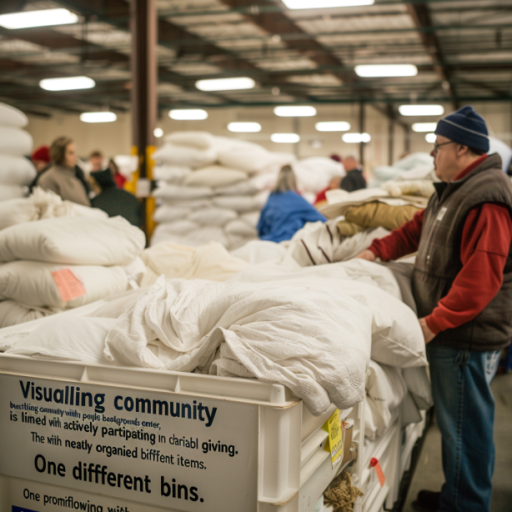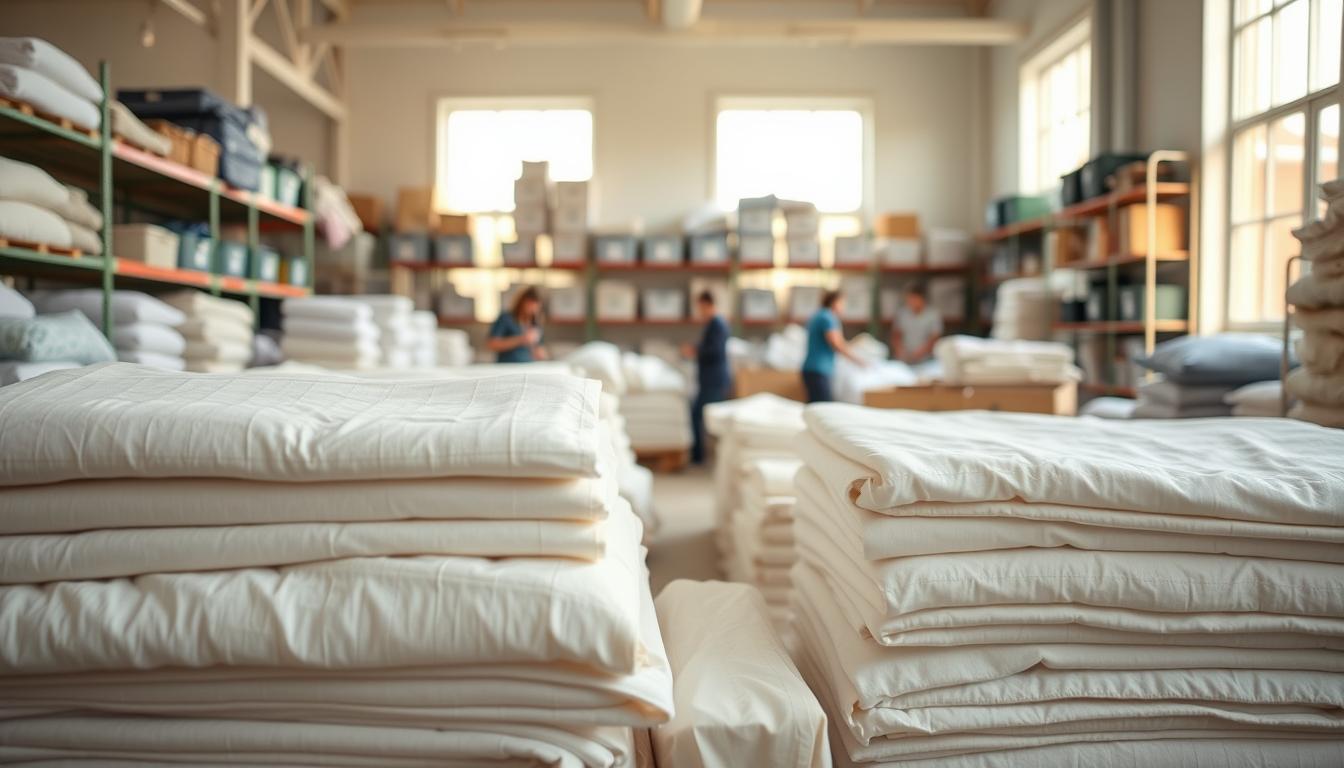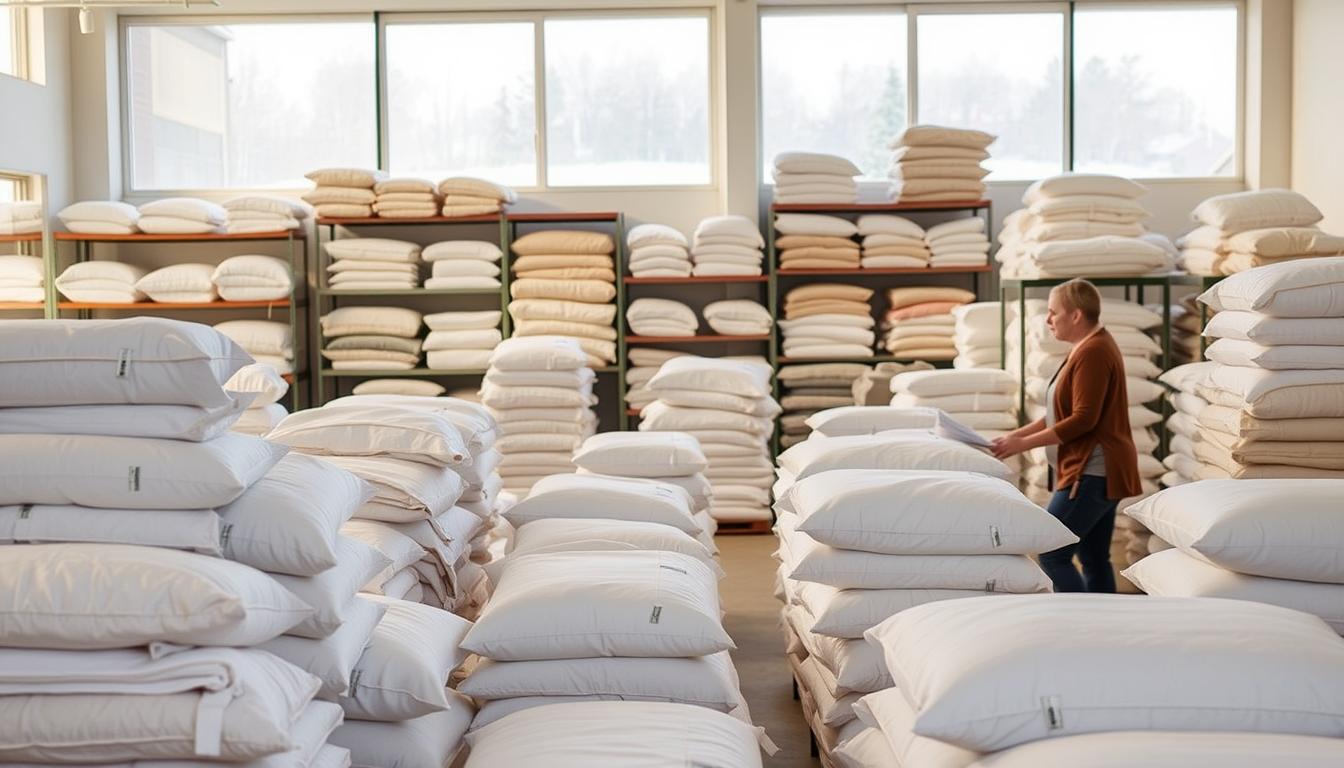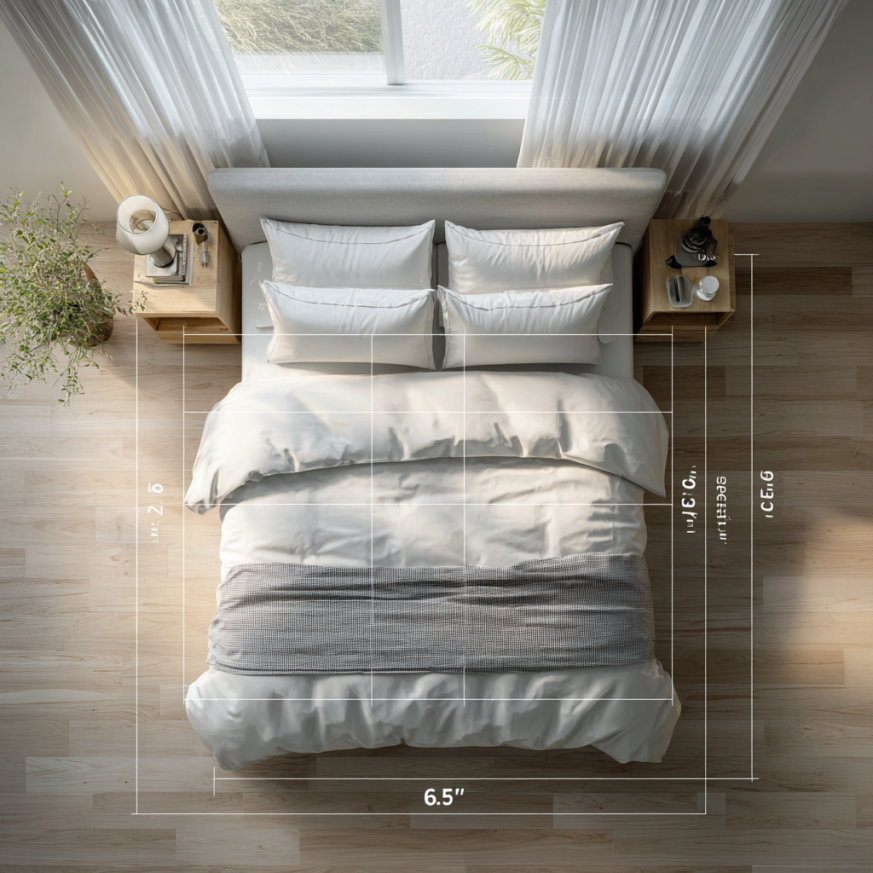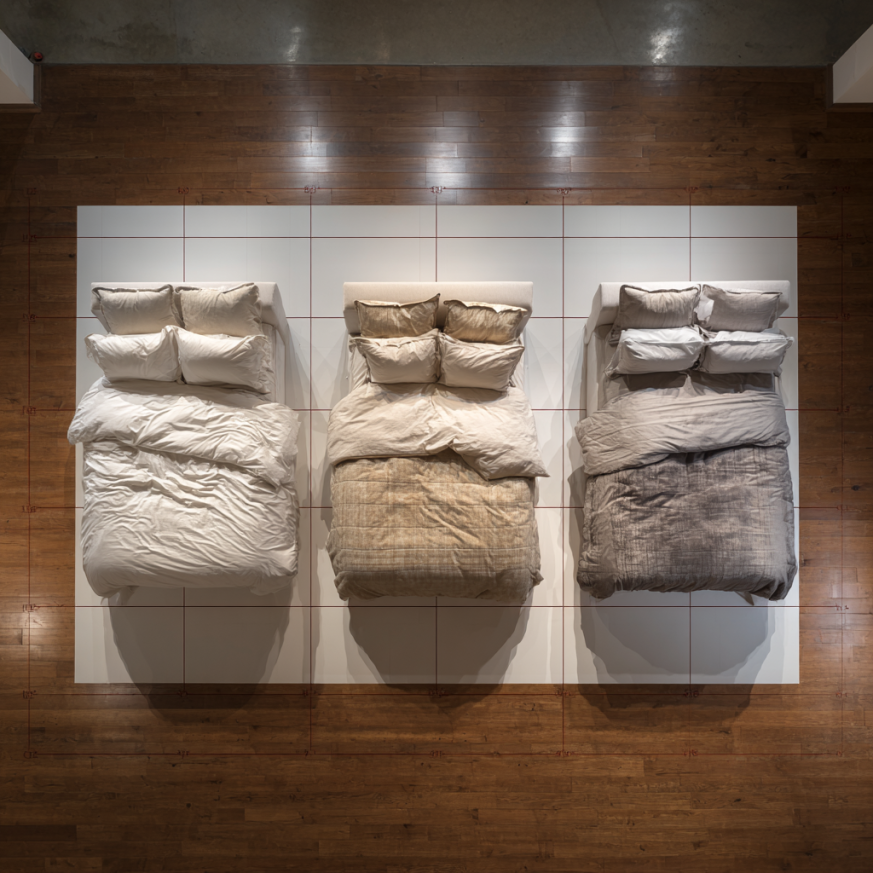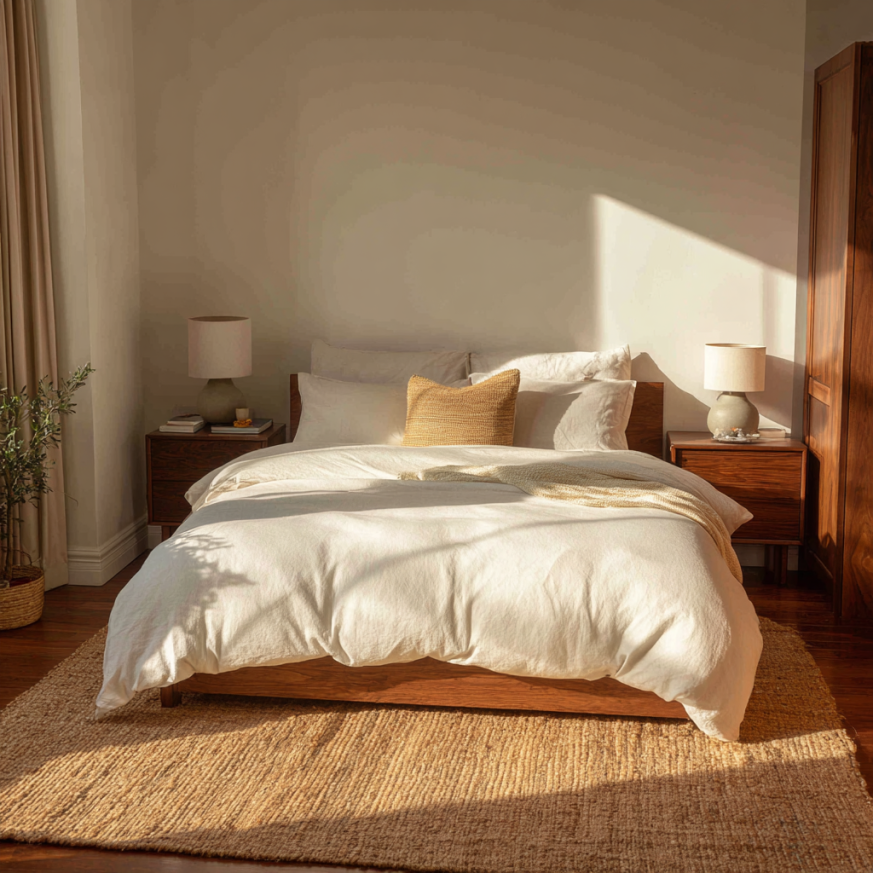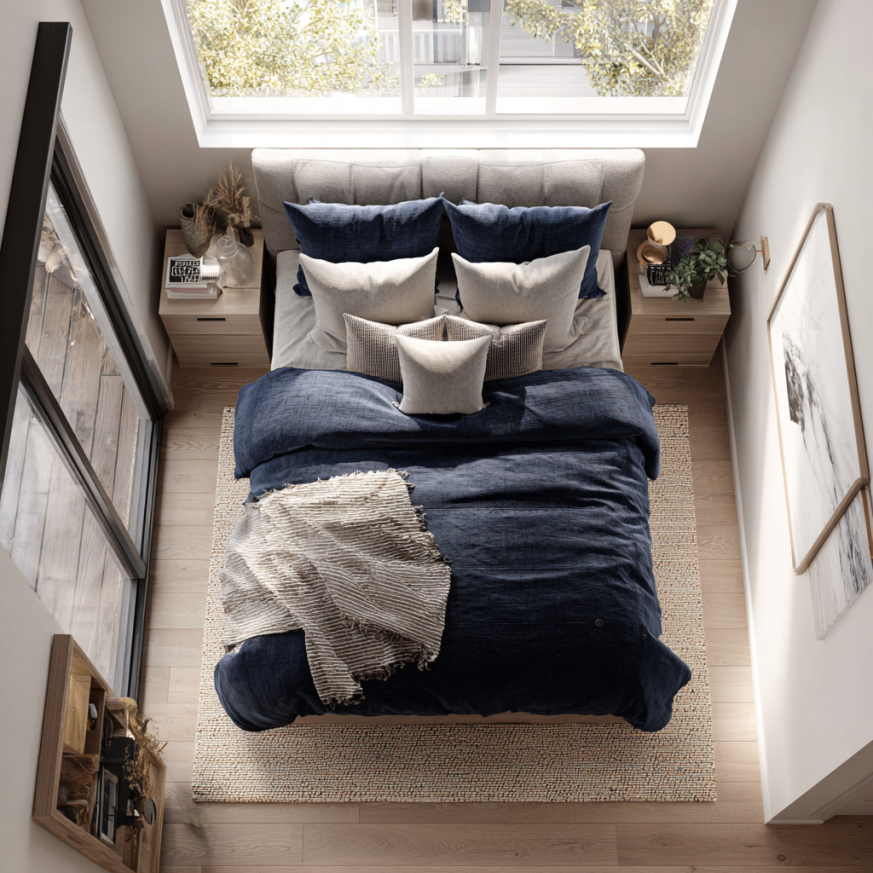The Toddler Bed Transition Handbook — Timing, Safety & Routines
Updated 2025. The Toddler Bed Transition Handbook is your step-by-step guide to moving from crib to first bed with fewer wake-ups and less stress. Aim for around age three, watch clear readiness signs, childproof the room, and keep routines simple and consistent for calm, confident nights.
Key Takeaways from The Toddler Bed Transition Handbook
- Waiting until ~age 3 often leads to smoother nights and better boundary-keeping.
- Readiness shows up as climbing attempts, “big kid” interest, and following simple rules.
- Safety first: anchor furniture, secure windows, and keep the sleep zone clutter-free.
- Short, predictable routines reduce anxiety and help new habits stick.
- Use The Toddler Bed Transition Handbook as your checklist for timing, setup, and coaching.

A calm, stepwise plan keeps the change positive for toddlers and parents.
Understanding the Shift from Crib to Bed
Big moves work best when development and environment match. Many families consider the change around age two, but closer to three is often easier because children better understand boundaries and morning rules. See how kids’ beds evolve as needs grow.
In practice, The Toddler Bed Transition Handbook encourages pacing: try adjustments in small steps, celebrate progress, and avoid rushing due to outside timelines.
Readiness Signs You Can Trust
Look for consistent, practical cues before you switch. The Toddler Bed Transition Handbook highlights three: safety, interest, and self-control.
- Safety: Repeated climbing or attempts to exit the crib despite lowering the mattress.
- Interest: Asking for a “big kid” bed, talking about siblings’ beds, or choosing themed bedding.
- Self-control: Following simple two-step directions and staying seated at meals for a few minutes.
Not seeing all the signals yet? It’s okay to wait. If an early try brings lots of roaming, return to the crib for a few weeks and retry later.
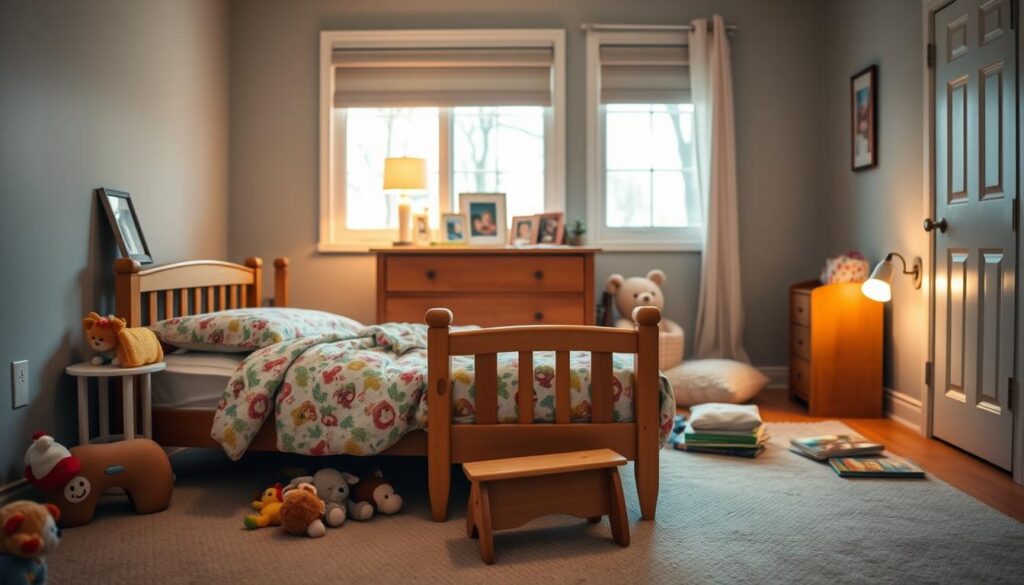
Steady signs—safety, interest, and simple self-control—point to real readiness.
Safety First: Prepare the Room Like a “Big Crib”
Freedom to get out of bed means the whole room must be safe. Crawl at child level to spot hazards. Anchor dressers and bookshelves, add outlet covers, move cords out of reach, and secure windows. Use a low, stable mattress and consider a rail during the first weeks. For material and air-quality labels you’ll see while shopping, review mattress certifications explained.
Keep the sleep zone simple: mattress, breathable bedding, and one familiar lovey. Store toys in bins away from the bed to reduce “playtime temptation.” The Toddler Bed Transition Handbook also suggests a quiet landing spot—like a small rug—to soften early tumbles.
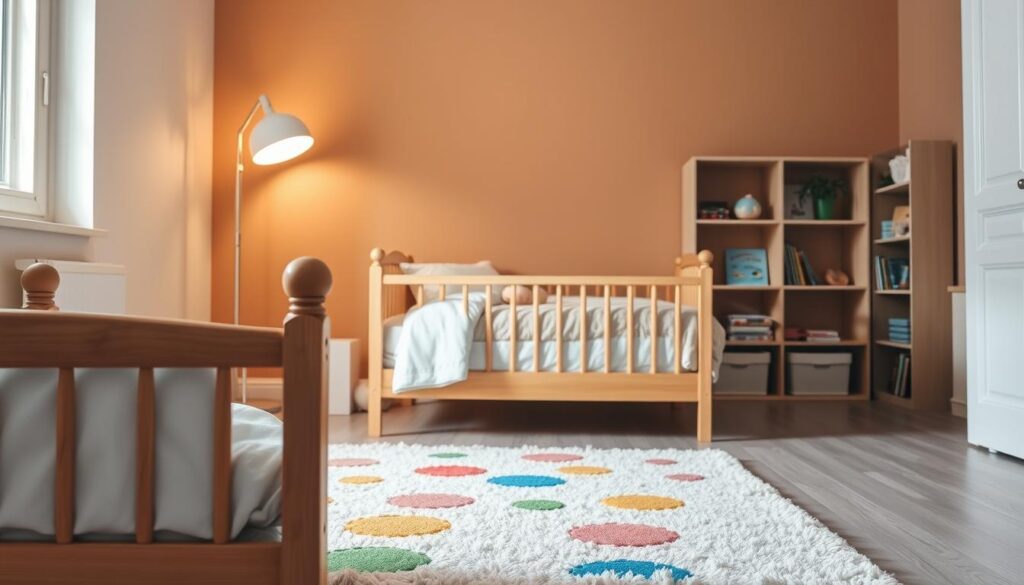
Anchor furniture, manage cords, and keep the sleep zone clear to prevent nighttime wandering mishaps.
Make It Theirs: Involve Your Toddler Early
Ownership lowers resistance. Start two to three weeks before the switch. Offer small choices—two sheet patterns, where the favorite stuffed animal rests, which book goes first. Walk through the move step-by-step so nothing feels sudden.
Use simple language: “At bedtime, we lie down, cozy up, and rest our bodies until morning.” The Toddler Bed Transition Handbook recommends daytime practice—lie down together for one minute, whisper “goodnight,” and celebrate success.

Small choices create big buy-in—kids love showing off “their” bed.
Bedtime Routine & Night Wakings: Keep It Predictable
Familiar anchors calm the change: bath, PJs, two books, lights out. Add a nightlight and a brief goodnight phrase. When wakings happen, keep responses short and steady—return to bed with minimal talking. Consistency teaches what to expect.
The Toddler Bed Transition Handbook suggests a simple reward chart for staying in bed and a “morning light” clock to signal wake time. If your child roams, calmly guide them back each time without new snacks, screens, or long chats.
Timing, Sleep Needs, and What Experts Say
Toddlers generally need ample total sleep over 24 hours. For age-appropriate ranges and healthy-sleep guidelines, see the National Sleep Foundation’s children & sleep overview and the American Academy of Sleep Medicine pediatric resources. Many families find that waiting until closer to three years supports impulse control and smoother nights.
If a sibling is arriving or daycare schedules are shifting, plan the transition a few weeks before or after other big changes. The Toddler Bed Transition Handbook encourages one change at a time for stability.
Quick 2-Week Action Plan
Use this simple sequence from The Toddler Bed Transition Handbook to reduce stress and build momentum.
- Days 1–3: Talk about the new bed, read bedtime stories about growing up, and childproof the room.
- Days 4–6: Let your child choose sheets and a bedtime book order; practice quick “lie down and rest” drills.
- Days 7–9: Assemble the bed, keep the crib available as backup, and walk through the routine in daylight.
- Days 10–14: First nights in the bed. Repeat the same routine; return to bed calmly if they wander.
Want more setup details and bedding ideas? Explore safe toddler bedding tips.
FAQ
What age is best to start The Toddler Bed Transition Handbook steps?
Many children do best closer to age three, when they can follow simple rules. If climbing out creates safety risks earlier, prepare the room and switch sooner.
How do I handle constant get-outs after switching?
Keep responses calm and brief. Guide back to bed with the same phrase each time. A morning-light clock and a small reward chart help most families within two weeks.
Should I move to a floor bed or a framed toddler bed?
Both can work. Choose a low, stable surface with a clear perimeter and a safe room. A short rail can help during the first weeks.
What if my toddler isn’t interested yet?
Wait until you see steady cues—interest, simple self-control, and safe behavior in the crib. It’s fine to pause and try again later.
How much sleep do toddlers need?
Consult expert ranges and nap guidance from the National Sleep Foundation and the AASM. Aim for ample total sleep over 24 hours and a consistent schedule.
Is it okay to switch back to the crib?
Yes. If nights become chaotic, return to the crib for a short reset and retry later. The goal is safe, steady rest for everyone.
Conclusion
The Toddler Bed Transition Handbook keeps the process simple: choose patient timing, prepare a safe room, involve your child, and keep routines predictable. Follow your little one’s cues, and you’ll protect everyone’s rest while building confident independence. Keep exploring practical guides at Cozy Bed Quarters.



